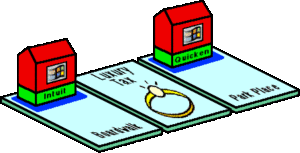GPS Gets Less Selective
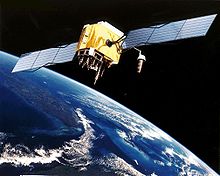 May 1, 2000
May 1, 2000
President Bill Clinton releases a statement announcing that the U.S. government will remove Selective Availability from its Global Positioning System at midnight, improving the accuracy of civilian GPS devices from 100 meters to 20 meters. Originally created to impede hostile forces from taking advantage of the GPS system, pressure mounted from many areas to eliminate Selective Availability and make GPS more accurate for civilian purposes. Initially set to be disabled in sometime 2006, it happened on this day 6 years earlier than planned because the U.S. military had developed a new method of denying GPS to hostile forces in a specific areas without affecting the rest of the world or its own systems. This action paved the way for the proliferation of GPS usage for accurate navigation functions, such as the turn-by-turn apps we use today on our smartphones.
World Wide Web Made Public Domain
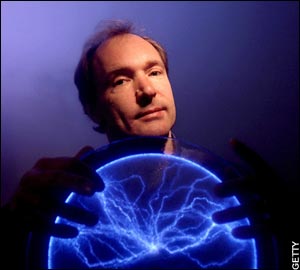 April 30, 1993
April 30, 1993
At the urging of Tim Berners-Lee, the creator of the World Wide Web protocol, the directors of CERN release the source code of World Wide Web into the public domain, making it freely available to anyone, without licensing fees. The decision to make the World Wide Web software and protocols freely available is considered by some as possibly the single most important moment in the history of the Internet. In fact, some historians mark this as the birth of the Web.
Sprechen Sie Sassy?
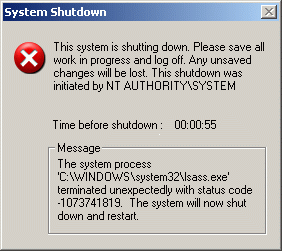 April 29, 2004
April 29, 2004
The Sasser worm is released into the wild, infecting over 1 million Windows XP and Windows 2000 computers worldwide. Although the worm did not have an intentionally destructive payload, it caused many computers to slow down or crash and reboot repeatedly along with clogging up network traffic. Among the effects of the worm, the British coast guard had to resort to paper maps for the day, a French news agency lost satellite communication for hours, Delta Airlines had to delay or cancel many flights, and the University of Missouri had to disconnect its network from the Internet. Looks like 1 million PC users stepped in a big pile of sassy!
Ironically it has been speculated that the author of Sasser, a German computer science student Sven Jaschan, reverse engineered Microsoft’s patch for the LSASS vulnerability that was released earlier in the month in order to create the worm. Knowing that most computers would not have been patched and that it would spread quickly, he released the worm on this day, his 18th birthday. Lucky for him the German government determined that he had actually written the worm while he was 17, so while he was found guilty of computer sabotage, he was tried as a minor and given a 21 month suspended sentence. He now works as a security expert and consultant. Now that’s Sassy!
iTunes Music Store Launched; Record Execs Wet Themselves
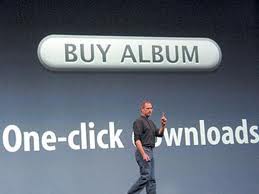 April 28, 2003
April 28, 2003
Apple Computer launches the iTunes Music Store. The store sells music for 99¢ a song for use with the Apple iPod and iTunes software. It is not the first service to sell digital music, but it will become the first to gain widespread popularity. The service will be an instant success, selling over one million songs in its first week and going on to change the music industry forever. The iTunes Music Store is now the #1 music retailer in the United States, surpassing Wal-Mart in 2008.
Justice Department Blocks Microsoft Purchase of Intuit
The US Justice Department sues Microsoft to block its acquisition of Intuit, Inc. In October of 1994 Microsoft and Intuit had agreed to a $1.5 billion stock swap where Microsoft would acquire the maker of the popular Quicken personal finance software. It would have been the largest software company merger in history at the time. Quicken had approximately 75% of the personal money-management software market. Microsoft’s Money software only had about 5-10% percent. Microsoft had intended to sell Money to rival Novell in order to avoid anti-trust accusations, given that Microsoft had only recently settled a 4-year government investigation into harmful business practices. However the Justice Department was not satisfied with this arrangement and claimed that the combined Microsoft and Intuit would hold too much power over the personal finance market. While initially Microsoft and Intuit remained committed to the deal and vowed to fight in court, less than a month later Microsoft announced it was walking away from the merger.
It is interesting to consider what may have happened if Microsoft had bought out Intuit. Certainly Microsoft would have been a significantly stronger company in the short term. Clearly Intuit’s Quicken and Quickbooks combo of software became the de facto standard for finance software for many years and it would have in theory only become more entrenched had it been under the umbrella of Microsoft. As it stands, Microsoft eventually discontinued Money in 2009.
Commercial Computer Mouse Introduced
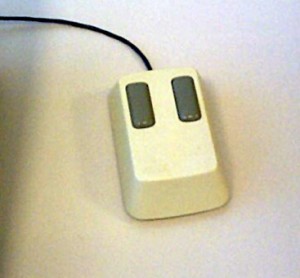 April 27, 1981
April 27, 1981
Xerox introduces the Xerox 8010 Star Information System, the first commercial system utilizing a computer mouse, among other now commonplace technologies. The 8010 was geared towards business and was not a commercial success, therefore the mouse remained in relative obscurity until the Apple Lisa, but more prominently the Apple Macintosh, brought the mouse into the mainstream.
Buried E.T. Cartridges Discovered by Archeologists
As part of the filming of the documentary, Atari: Game Over, a team of archaeologists at a landfill in Alamogordo, New Mexico uncover the site of an estimated 700,000 Atari 2600 cartridges buried in 1983, including copies of E.T. the Extra-Terrestrial, one of the most famous commercial failures in video game history. Since 1983 when it was first reported that Atari had dumped excess copies of unsold cartridges, the event had become a type of urban legend, with the details of the games, other equipment, and quantities dumped varying according to who was telling the story. It also became a symbolic event of the video game crash of 1983, where home video game revenues fell by nearly 97% over two years. It was commonly believed that millions of copies of E.T. were buried, although it was claimed by a former Atari official during the excavation that the number was only 728,000 cartridges of various games.
It was reported that only about 1100 cartridges were uncovered as the majority were buried deeper than expected. Games found in the recovery included Yars’ Revenge, Star Raiders, Pac-Man, Space Invaders, Defender, Warlords, Centipede, and yes E.T.
As an 8 or 9 year old kid, I actually really liked the E.T. game! I remember the agony of not being able to win and having E.T. die or be captured, and the thrill of completing the game and sending E.T. home. In fact, I still have my original cartridge as well as my original Atari 2600.
Chernobyl Virus Melts Down PCs
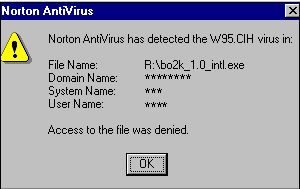 April 26, 1999
April 26, 1999
The first known virus to target the flash BIOS of a PC, the CIH/Chernobyl Virus triggers its payload on this day, erasing hard drives and disabling PCs primarily in Asia and Europe. One of the most destructive viruses in history, it is estimated that 60 billion PCs were infected worldwide causing $1 Billion in damages.
The virus had been created exactly one year earlier on April 26, 1998 by Taiwanese student Chen Ing-hau and set to trigger its destructive payload exactly one year later. It began to spread in the wild and was first discovered in June of 1998, given the name CIH due to the author’s initials discovered in the virus code. From this time forward it was reported that a variety of companies accidentally distributed the virus through various downloads, updates, and CDs. When the virus triggered on this date it just happened to coincide with the date of the Chernobyl disaster in 1986 and therefore the press began to call it the Chernobyl virus, even though there has never been any evidence to show that this date was chosen intentionally for this reason.
Do You Yahoo?
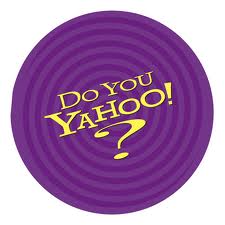 April 25, 1996
April 25, 1996
Yahoo! begins advertising its web-based search service on national television, featuring the tag line “Do You Yahoo?”. The ads first air during Late Night with David Letterman, Saturday Night Live, and Star Trek. This was a very early example of the Internet entering into the mainstream.
Hubble Deployed
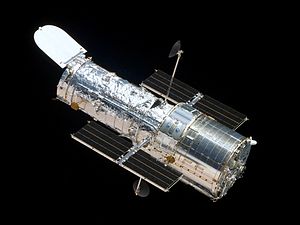 April 25, 1990
April 25, 1990
The crew of the Space Shuttle Discovery deploys the $2.5 billion Hubble Space Telescope. There will be initial difficulties caused by a flaw in the design of the telescope’s main mirror. Image correction software will keep the telescope useful until corrective optics are installed December of 1993.

